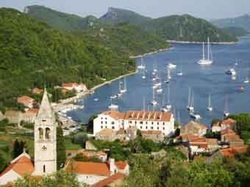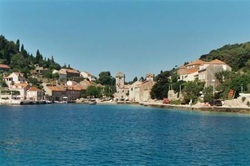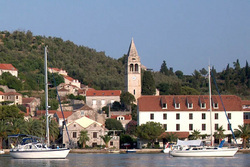Šipan - the Largest of the Elafiti Islands
|
Šipan (pronounced “sheepan”) is the largest island in the Elafiti archipelago. It is also the richest in cultural heritage. It stretches between the islands of Lopud and Jakljan, just a few miles off the coast of Dubrovnik.
Šipan is a host of a number of churches (over 30) dating back to Middle Ages. One of the oldest ones is St. Peter's. Its story is quite interesting. It was first mentioned (in a written document) in 1275. It was then renovated and raised higher. Unfortunately, soon after it was destroyed. You can still see the remains of its past edifice.
Heading south out of Šipanska Luka, the six km walk to the village of Suđurađ (also traversed by occasional minibus) takes you past some lovely Šipansko polje scenery. The quay of Sudurađ is overlooked by an imposing pair of stone towers, all that's left of a summer palace of sixteenth-century Dubrovnik shipowner Vice Stjepović Skočibuha. Running round the side of the palace, the village's main alleyway ascends towards a blockhouse-shaped fortified church. The similarly fortified St Mary's Church (Svete Marije), 2km northeast of Suđurađ in the hamlet of Pakljena, is hardly ever open – but the sight of its crenellated sixteenth-century tower peeking above the greenery is rather pleasant. The island of Šipan is magnificent in its natural beauty. Its inhabitants are warm and welcoming. Interestingly, they preserve the language of their ancestors (quite similar to the language spoken in Dubrovnik with just slightly different pronunciation of some words). If you wish to visit Šipan but just cannot or do not want to do without the touch of the 21st ct., there are cafe bars, restaurants and a hotel in šipanska luka (harbor) to keep you in the now. |
In various epochs Šipan was called by different names: Tauris (Roman times), Gypanon (Greek times), Giupana, Zupanno (Itailan), until it was finaly called Šipan (from 1371). In 1426 it became part of the Ragusan Republic.
|



